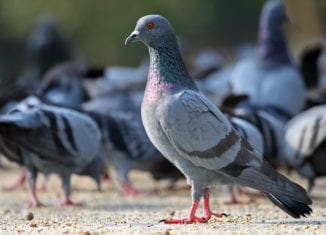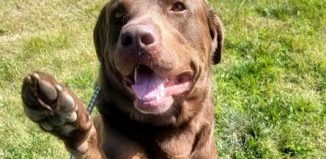Pigeons and humans have a long history of mutual benefit
Pigeons and humans have a long history of mutual benefit
By Elof Axel Carlson
When I was a child growing up in New York City, I used to watch the rooftops in my neighborhood and would see a person on the roof with a long pole guiding pigeons to stay aloft for their exercise. Pigeons were raised for squab, as the butchers called their featherless bodies lined up in trays. All of our American pigeons came from Europe. They were domesticated first in the Middle East. Ancient Greeks used them as carriers of Olympic victory results throughout the Greek empire as early as the eighth century BCE. Breeders found them enjoyable to study and many breeds arose. There are pouters, crested forms, carrier pigeons, fantails and about 40 other breeds.
In 1855 Charles Darwin began purchasing breeds of pigeons and cultivated them and studied their anatomy. They all trace their origin, Darwin claimed, from the rock pigeon and belonged to one species, Columba livia. Domesticated pigeons, used for food and to serve as carriers of messages, came to the New World and some escaped and became feral. The pigeons in our American cities are similar to rock pigeons in appearance, but they came from the domesticated imports some 400 years ago. As the industrial revolution shifted human living from farms to cities, the pigeons learned to build their nests on the ledges of windows and roof tops and to gobble up the crumbs of food scattered on sidewalks and in the gutters of streets. They are often thought of as flying rats by many city dwellers who loath their presence because they leave feathers and their wastes on the city streets and smear the statues in parks as they roost on the bronze heads of past heroes.
Darwin’s inference was confirmed by a study in 2013 at the University of Utah by biologist Michael Shapiro. He and his colleagues obtained DNA from 40 varieties of C. livia, including two feral strains. They showed that all the pigeons were descended from the ancestral rock pigeon and they showed how each breed arose through a specific mutation. They also showed that the crested forms involved a gene mutation that reversed the direction of feather growth in the neck region so that they form a cape or crown or tuft depending on where the mutation in that gene arose. The gene regulates a streak of cells in the neck region of the pigeon embryo that gives rise to the neck feathers.
For Darwin the domestication of pigeons with its many breeds was a clue that selection can be quite powerful in human breeders’ hands. They can isolate new varieties and combine multiple traits from different breeds to satisfy their tastes. However, in nature, he argued, each variety of pigeon would be tested in its environment on whether it was a beneficial variation or harmful, leading to its swift extinction. When Darwin returned from his voyage around the world on the HMS Beagle, 1831-1836, he began his 20-year study of his field notes and an immense amount of scientific studies from around the world that became the basis for his book on the origin of species by natural selection. New breeds can be observed in a matter of months or years for a breeder. For new species of pigeons it would be tens of centuries or longer for new species to emerge.
Elof Axel Carlson is a distinguished teaching professor emeritus in the Department of Biochemistry and Cell Biology at Stony Brook University.







